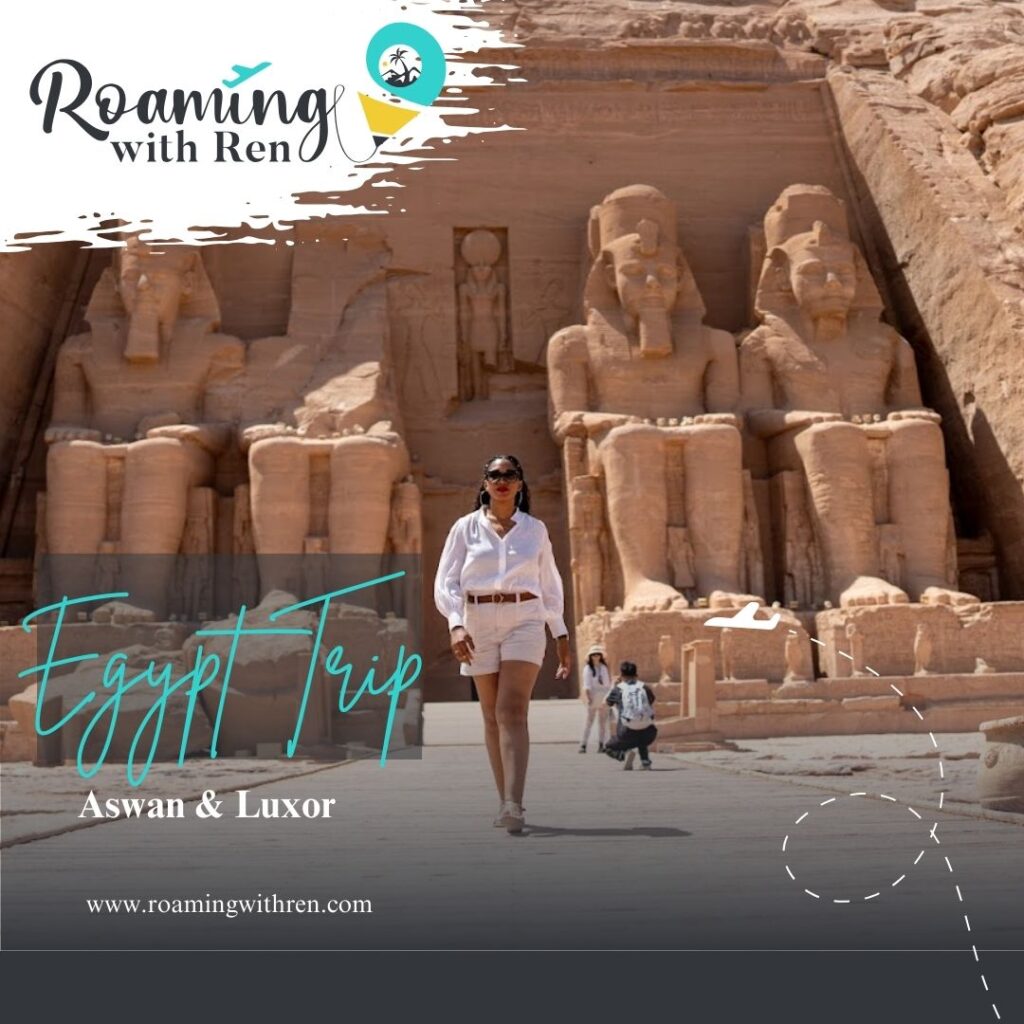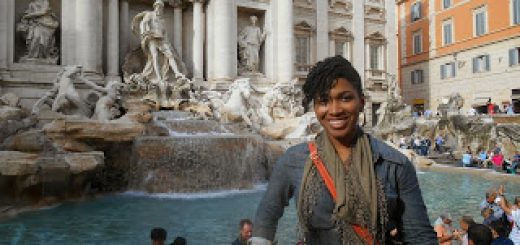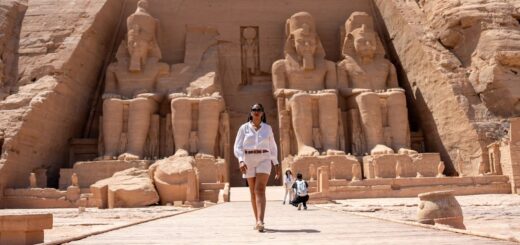Egypt Trip- Aswan and Luxor
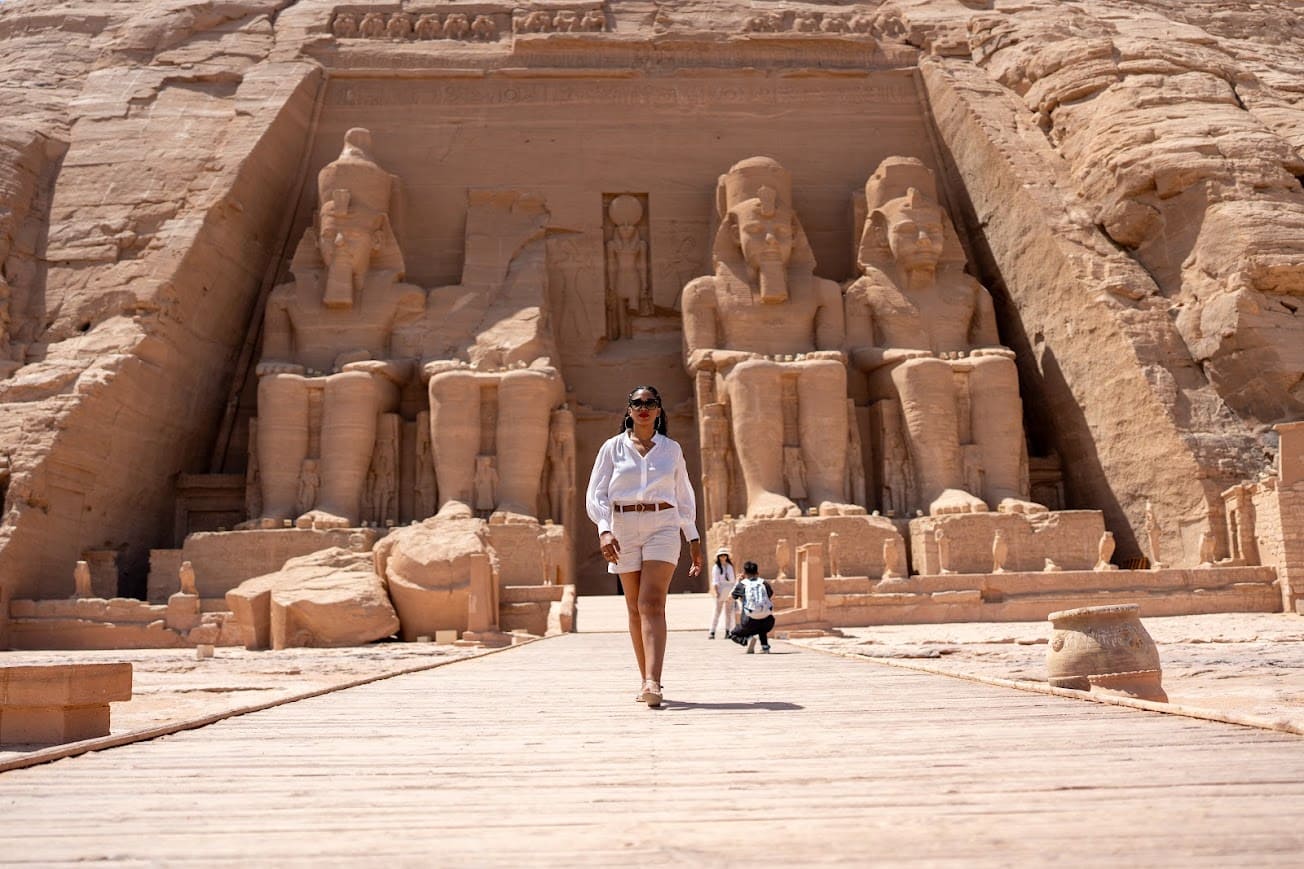
On the next leg of the trip, we explored Upper Egypt- namely the environs of Aswan and Luxor. I had originally intended for this to be two separate posts, but I feel like I may not get it all done if I don’t do it all now, so here goes!
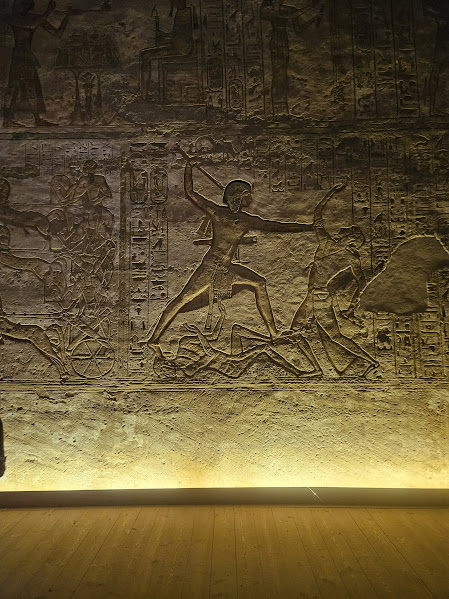
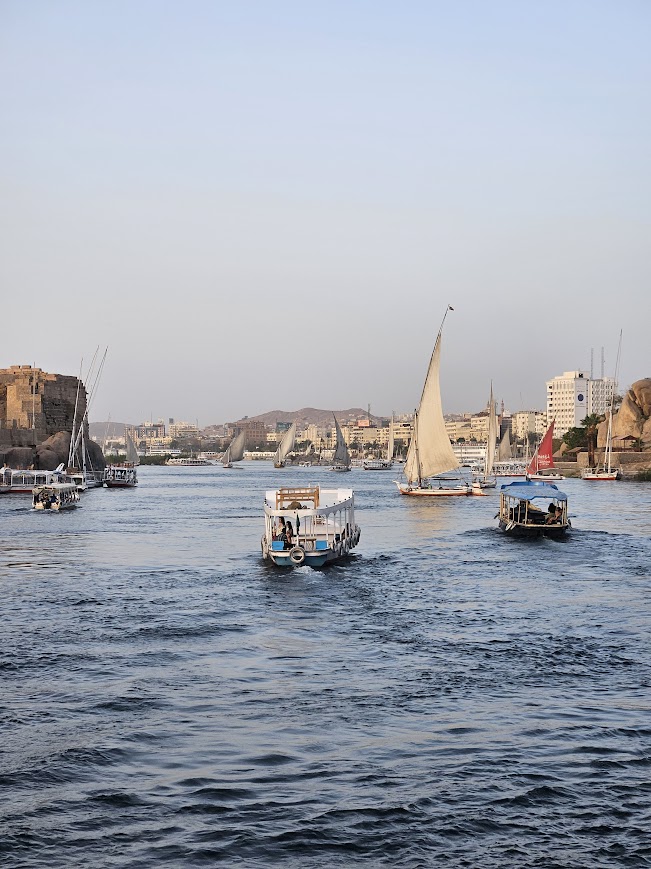
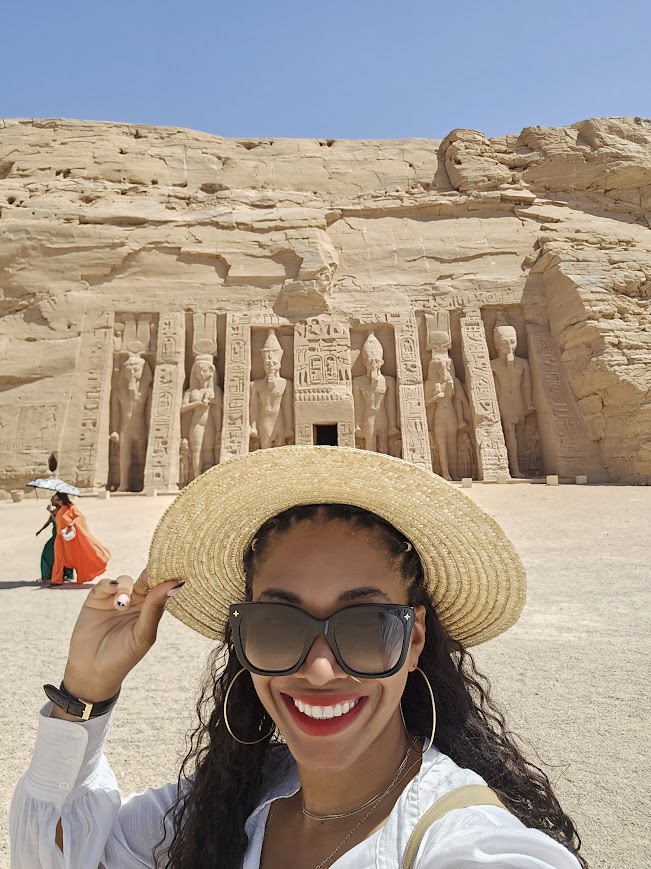
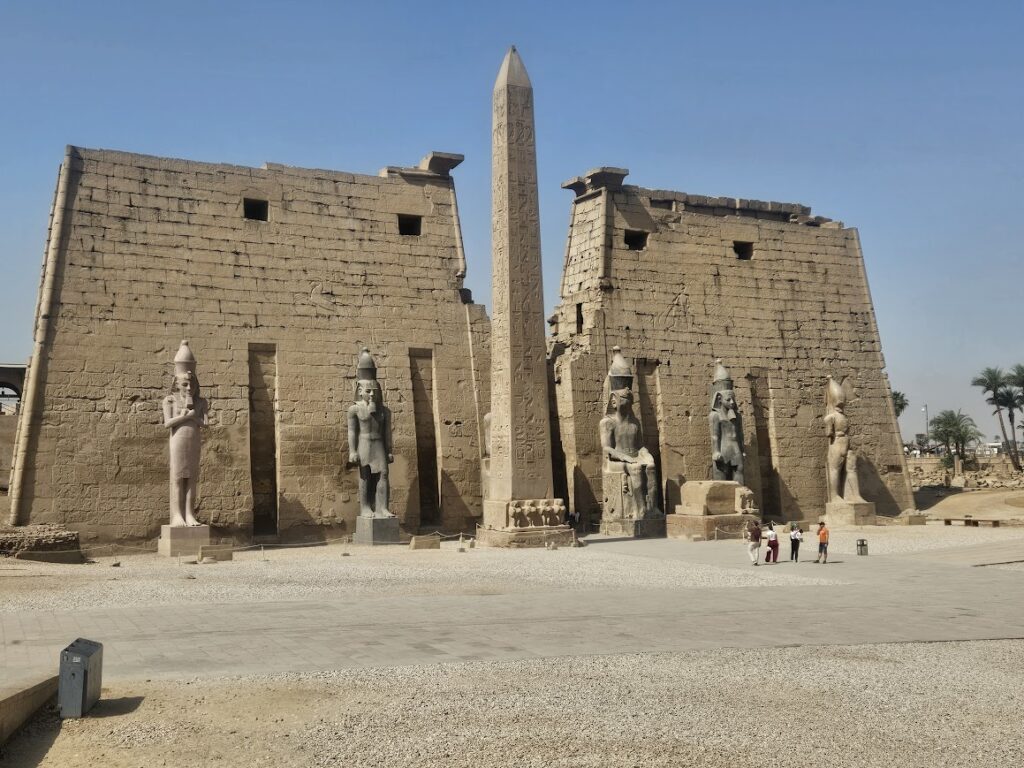
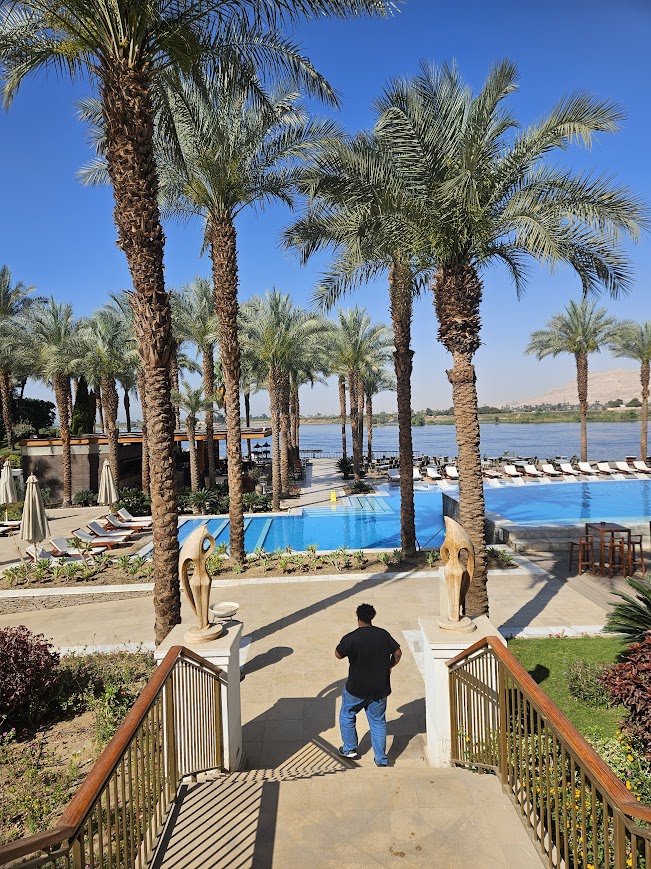
The main attractions:
- Philae Temple
- A Nubian Village
- Abu Simbel
- Edfu Temple
- Balloon ride over the West Bank of the Nile
- Karnak Temple
- Luxor Temple
- Valley of the Kings
- Hatshepsut’s Temple
How we got to Aswan
Getting to Aswan was easy enough. We took an early morning flight down from Cairo. . Whatever time you usually plan to get to the airport, add at least an additional half-hour to account for extra security checks. The flight was just under 1.5 hours. Our guide and Egyptologist, Sam, met us at the airport—a gem of a guide whose knowledge and organization elevated the entire trip. He was so knowlegeable, so pleasant and very organised; I would 100% refer him to anyone. He accompanied us to our hotel and waited while we checked in and sorted ourselves out.
Where we stayed in Aswan

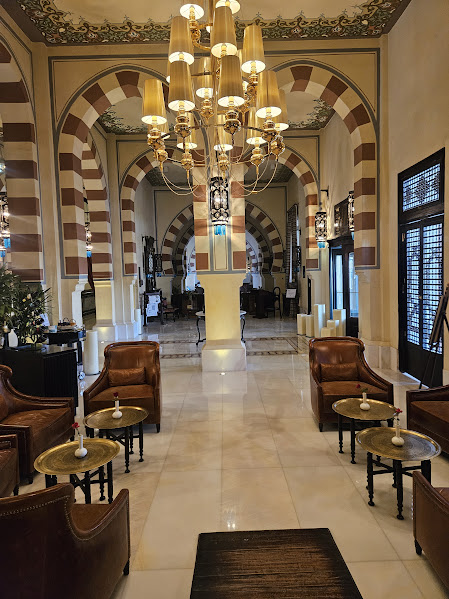

The (Sofitel) Old Cataract Hotel was fabulous; and I don’t dish out that sort of accolade lightly. The ambience and service were really top notch and actually luxurious. I would 10/10 recommend. I would have gladly spent anpther night here if we had it to spare. Perched on a cliff with terraces above the Nile, it is located in a truly spectacular setting. They also had a really good breakfast spread with nicely varied buffet options.
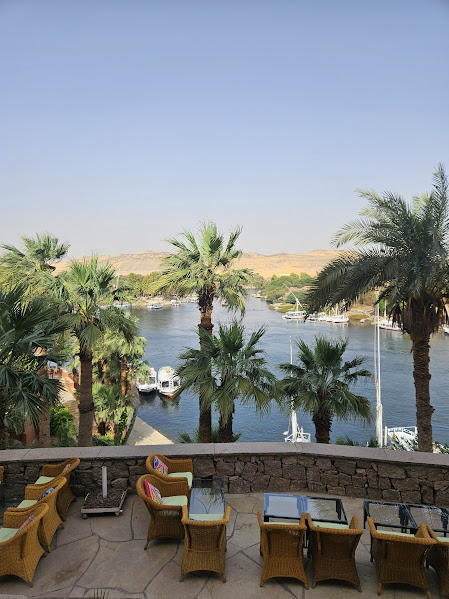
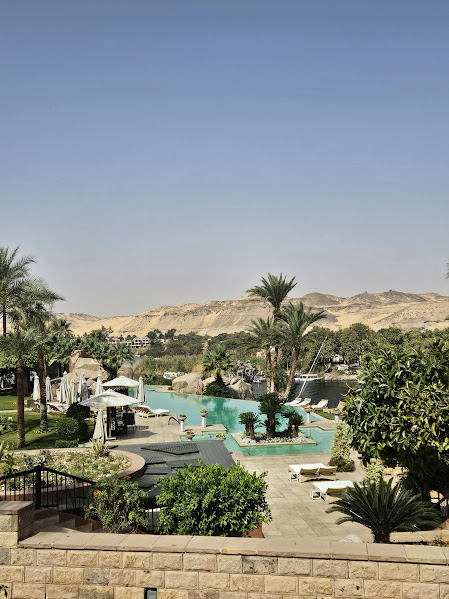
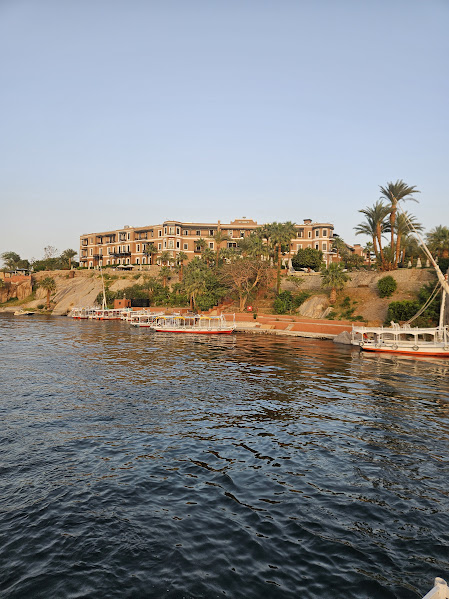
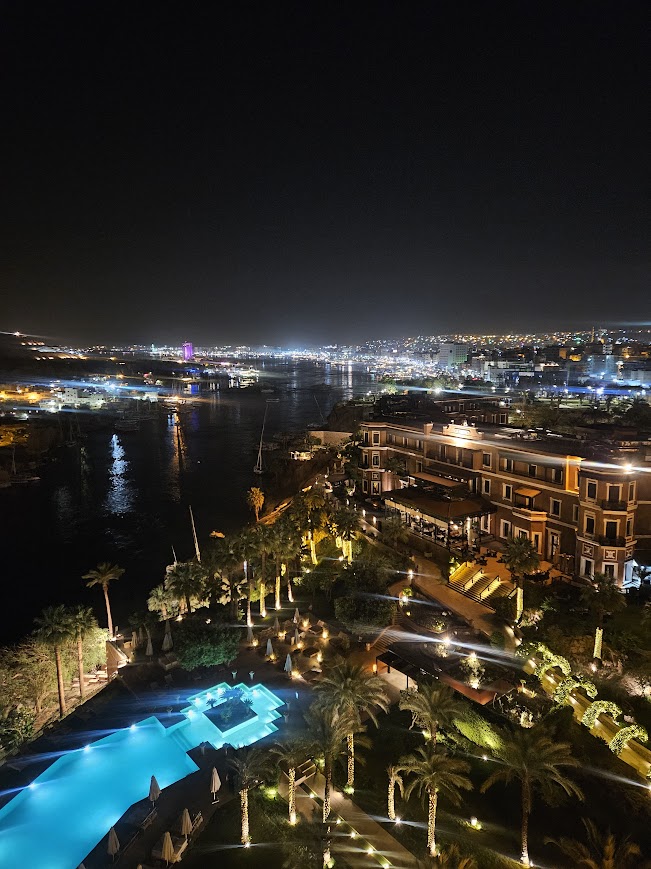
I had just enough time one evening to squeeze in a visit to the spa. I was able to take a quick swim at the fabulous indoor pool, and then do a quick steam in the sauna before it was time to get ready for dinner.

What we did in Aswan
Philae temple
Our first stop for the day was the Philae temple, which was our first ancient temple on this trip. The Philae Temple, was originally located on Philae Island near Aswan. In the 20th century, the temple was threatened by the rising waters of the Nile due to the Aswan High Dam. To save it, UNESCO led a massive project (1960–1980) to dismantle and relocate the entire complex to nearby Agilkia Island. We took a pre-arranged boat out to the temple location.
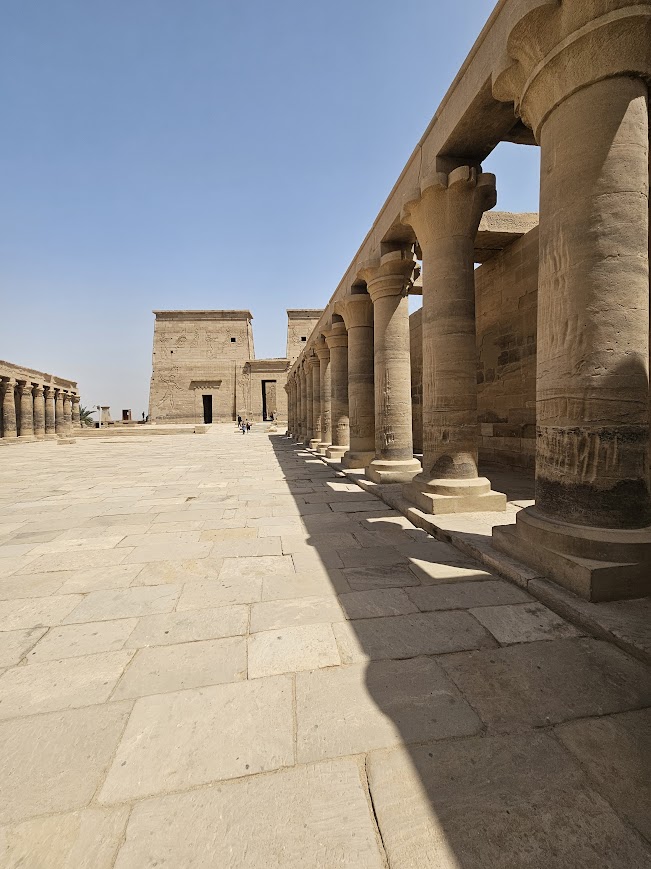
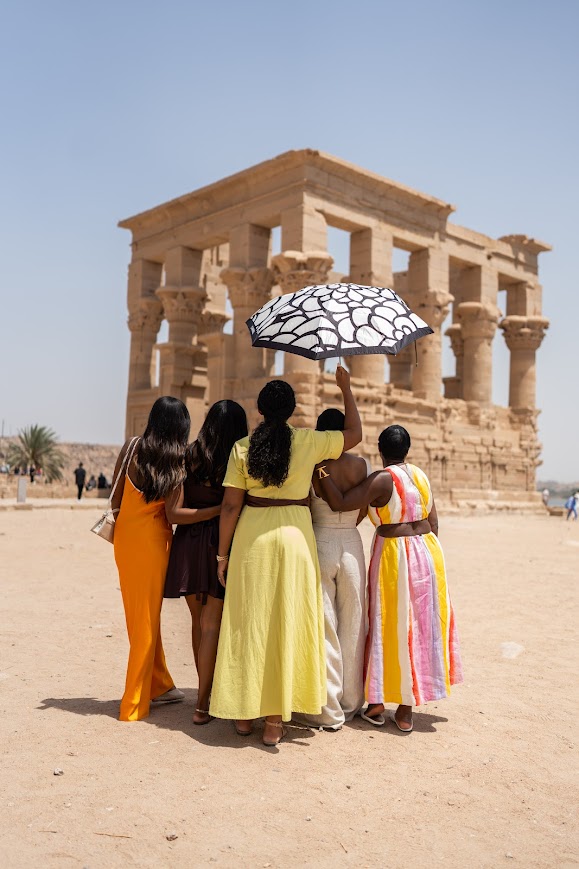
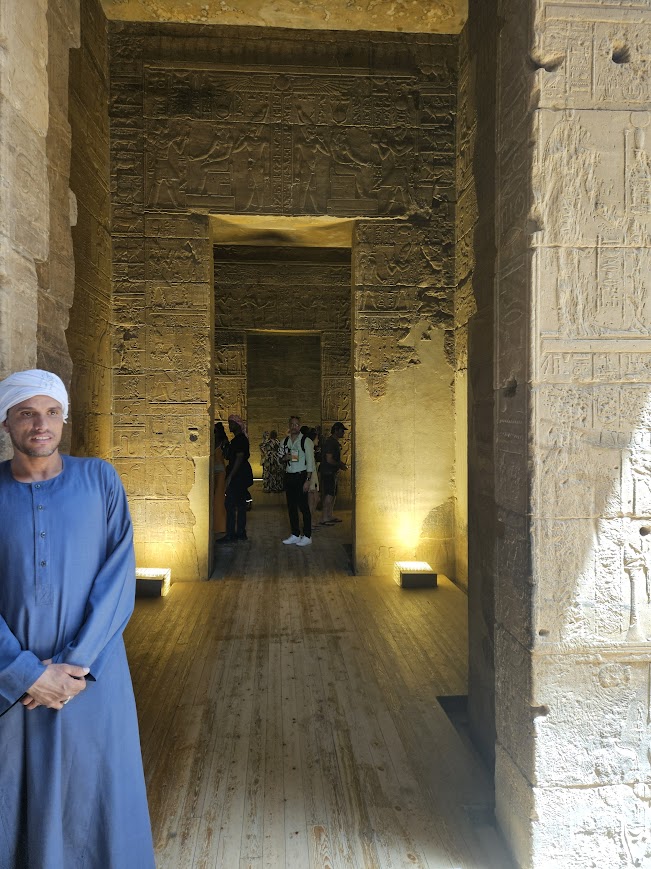
We got there in the middle of the day so the sun was OUT. As always, I’d recommend having a hat/ umbrella or some sort of shading with you.
Nubian village
In the late afternoon we set out to visit a Nubian village, upriver from our hotel, Our boat came to pick us up right at the dock by the hotel, which was super convenient. We then enjoyed a leisurely ride on the Nile. It reminded me a little bit of the Black River Safari boat tour back home in Jamaica.
When we entered the village, we had to walk through- a mini-market area en route to our hosts. Of course there were several vendors trying to sell their wares (mostly spices and souvenirs), so we had to be intentional in making our way through. One of the main attractions of visiting is the beautiful architecture and vibrant decor of the taditional homes. Some villagers, including our hosts, actually keep pet crocodiles inside their houses.

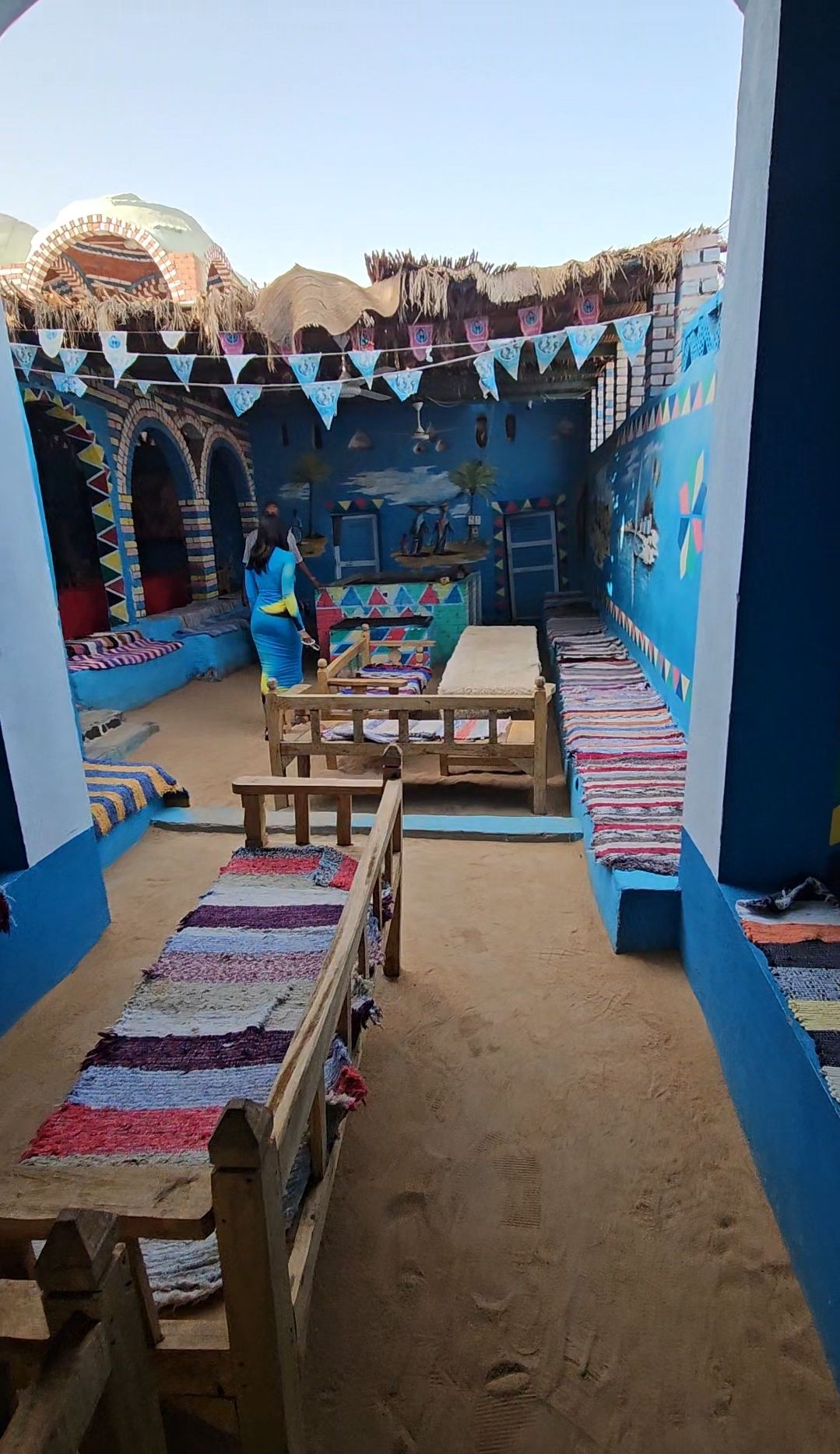
On our way back to Old Cataract, the waterway was a lot busier than when we departed, with lots of feluccas and other small vessels out and about.
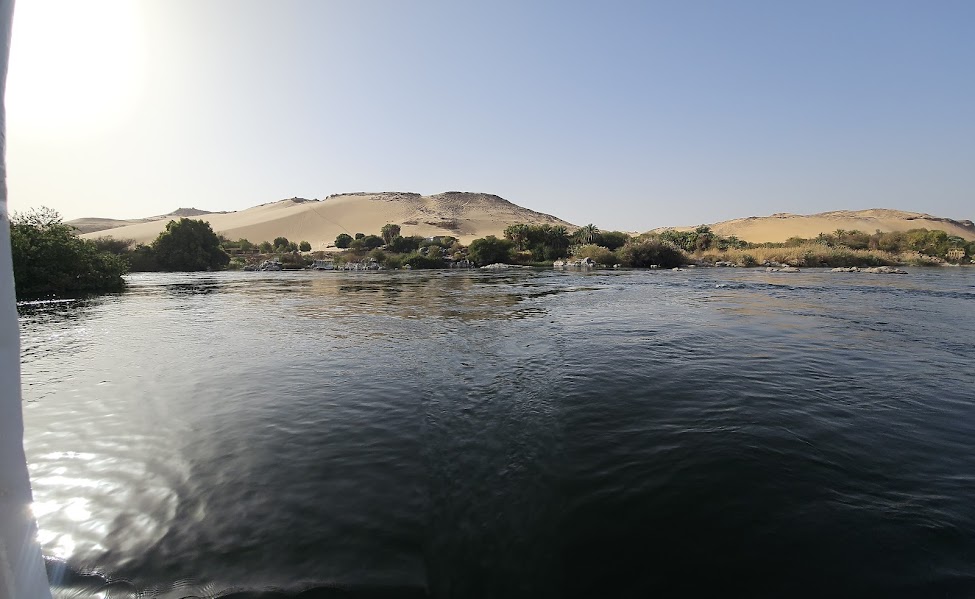
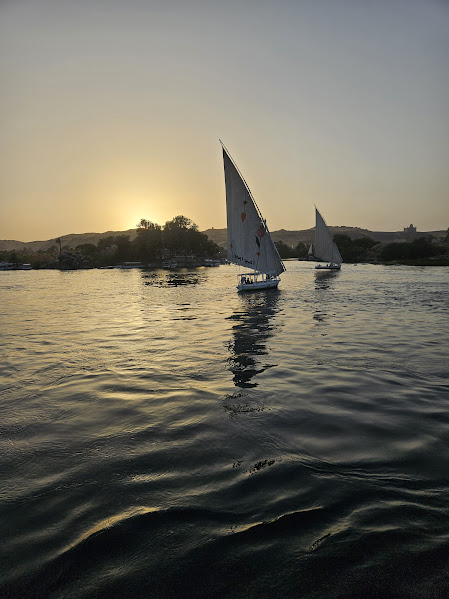
I had a good enough time yes, but the visit to the village itself is not a must-do in my opinon. However some type of boat ride on the Nile itself is what you definitely should do.
Abu Simbel
The next day we made the trek down to Abu Simbel. The journey took about 3 hours each way, but I’m glad we made the effort. While guides are allowed to accompany you at the site, they are not allowed inside the temples themselves. Therefore Sam give us a proper rundown before we went inside.
The larger temple honors Ramses II, with four colossal statues of the pharaoh guarding its entrance, while the smaller temple is dedicated to his beloved queen, Nefertari, and the goddess Hathor. In the 1960s, the construction of the Aswan High Dam threatened to submerge them underwater. In another remarkable UNESCO-led rescue mission, the entire complex was meticulously cut into massive blocks and relocated 65 meters higher to save it from flooding.
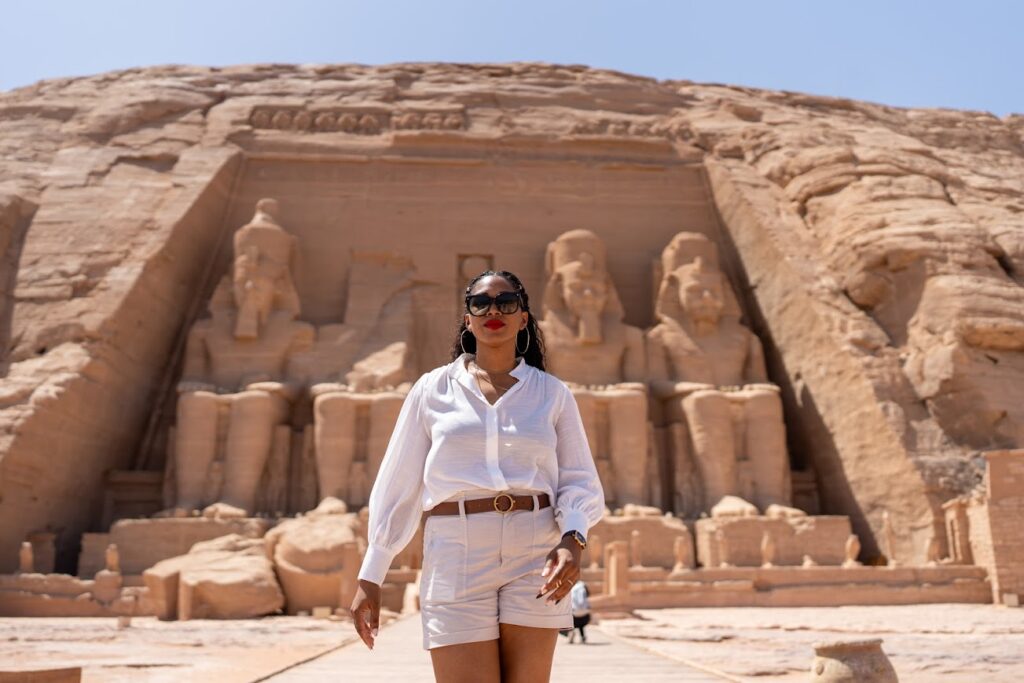
It is still unbelievable to me that these massive structures were hewn out of the rockface. The sheer scale is truly wonderous. Also consider that Rameses II is closer to us in time than to the construction of the pyramids. That’s crazy to wrap your mind around!
Visiting Abu Simbel isn’t just about seeing colossal statues. The temple’s architects designed it with jaw-dropping precision: twice a year, the rising sun pierces into the inner sanctuary, flooding three statues -while deliberately leaving Ptah, the god of darkness, in shadow. This was made possible through advanced astronomy and mathematics work. The alignment is said to mark Ramses’ birthday and coronation. When UNESCO moved the entire temple to save it from the Nile’s rising waters, engineers preserved this phenomenon down to the exact days.
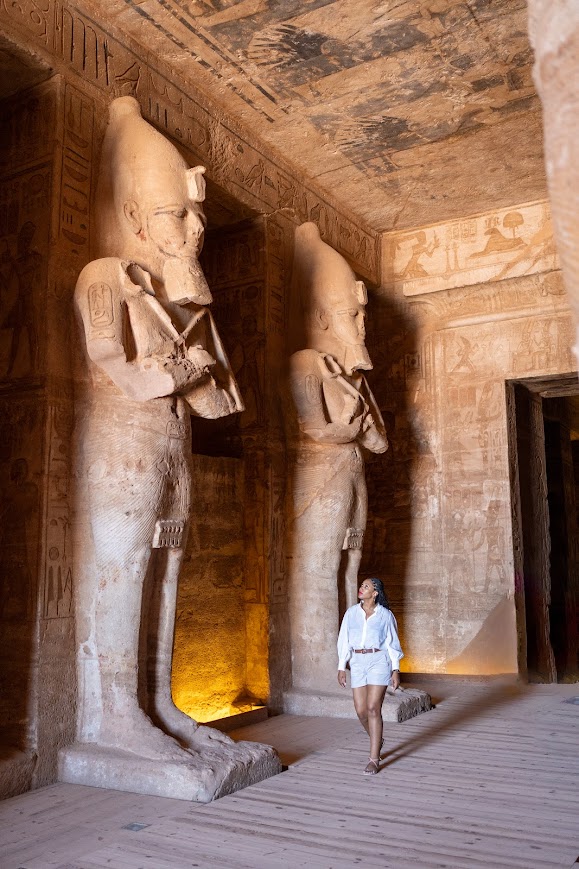
We had to hustle back to Aswan to make it back in time before the road closures at the military checkpoint (Abu Simbel is only 25miles from the border with Sudan). We were a little behind, but we made it back in time!
Overall I’m glad we made our way to Aswan. It won’t fit into every itinerary due to the logistics, but I’m glad we made it work.
Edfu
We then made our way overland to Luxor from Aswan. Along the way we made a stop at Edfu temple, which is said to be the most complete temple structure in Egypt.
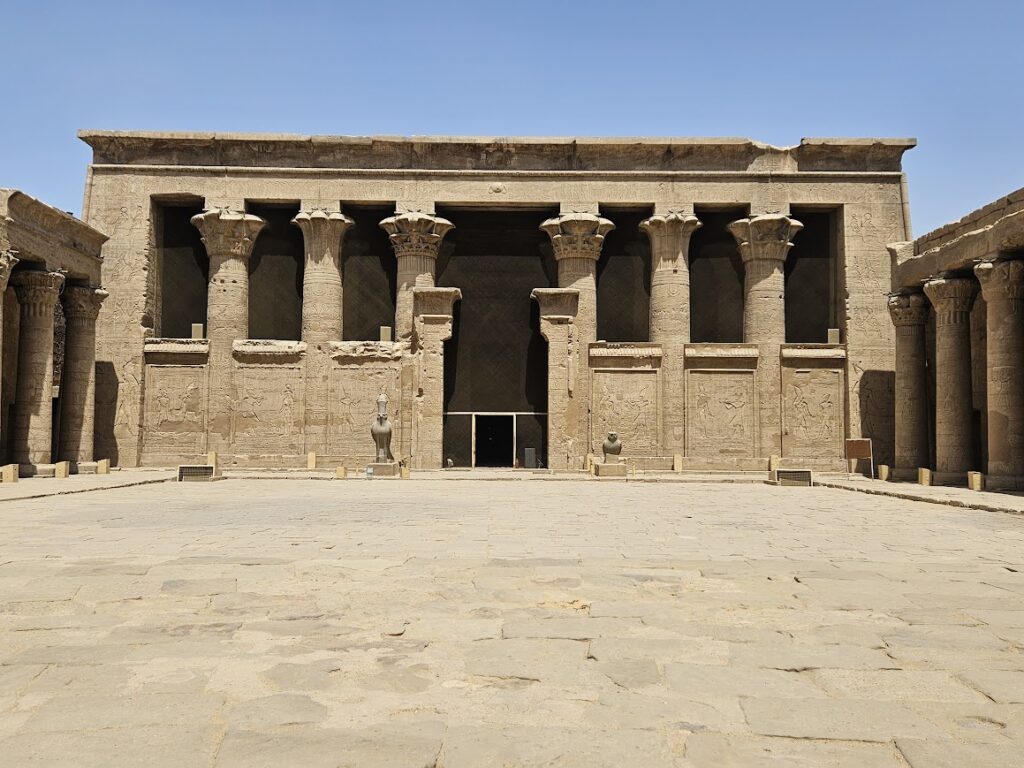

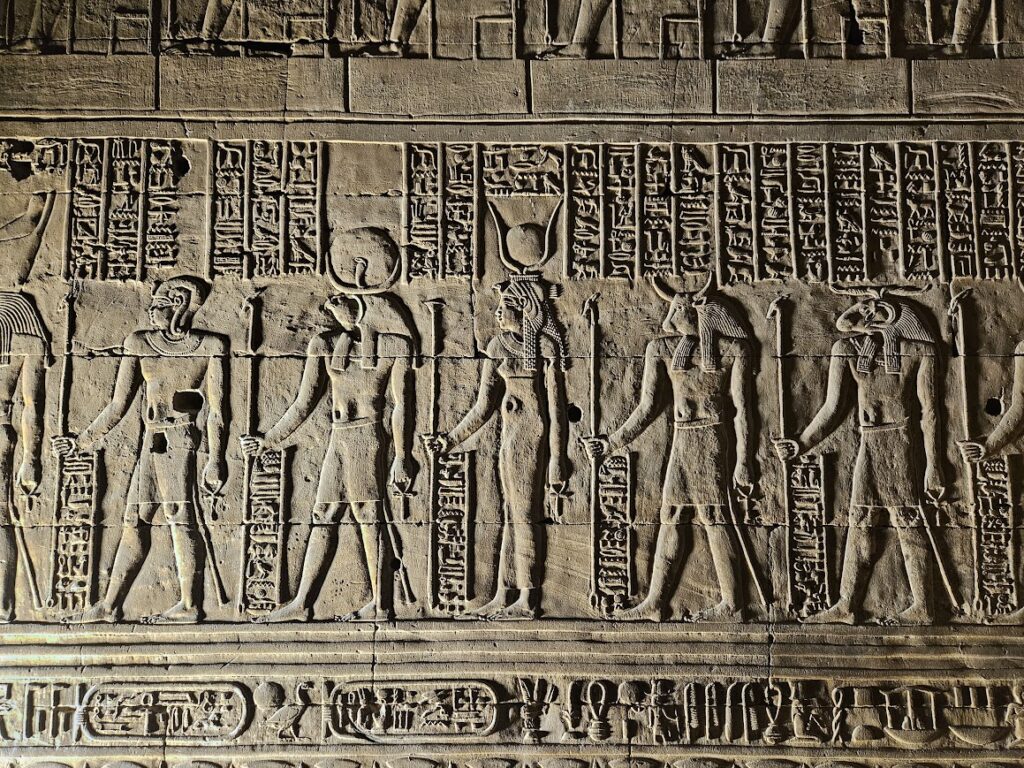
The temple is dedicated to Horus, the Ancient Egyptian god of the sky, sun, kingship, healing, protection, and war. The complex was relatively empty, and I do believe this has something to do with its location. It’s a little bit out of the way and would probably not make sense for most itineraries. Since we decided to go the overland route (the other option would have been to fly back to Cairo from Aswan, and then take another flight to Luxor), we decided to break up the leg with this stop instead.
Luxor
Where we stayed in Luxor
Hilton Luxor
The rooms here were the smallest across the trip, however I was upgraded to a room with a view of the Nile upon check-in . To be honest, with regard to service this Hilton was a bit inconsistent, and therefore a little mediocre. Of course anywhere else would seem wanting after being at Old Cataract, but even bearing that in mind, I think they can do better . The hotel grounds were lovely though.

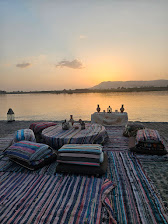

What we did in Luxor
Balloon Ride
We had to get up pretty early to take a small ferry accross to the West Bank. Remember my commentary on the chaotic traffic in Cairo in my previous post? Well even here on the river, there was an incident where the boat we were on had a small bang up with another boat. It was the same chaotic energy in the boat traffic.
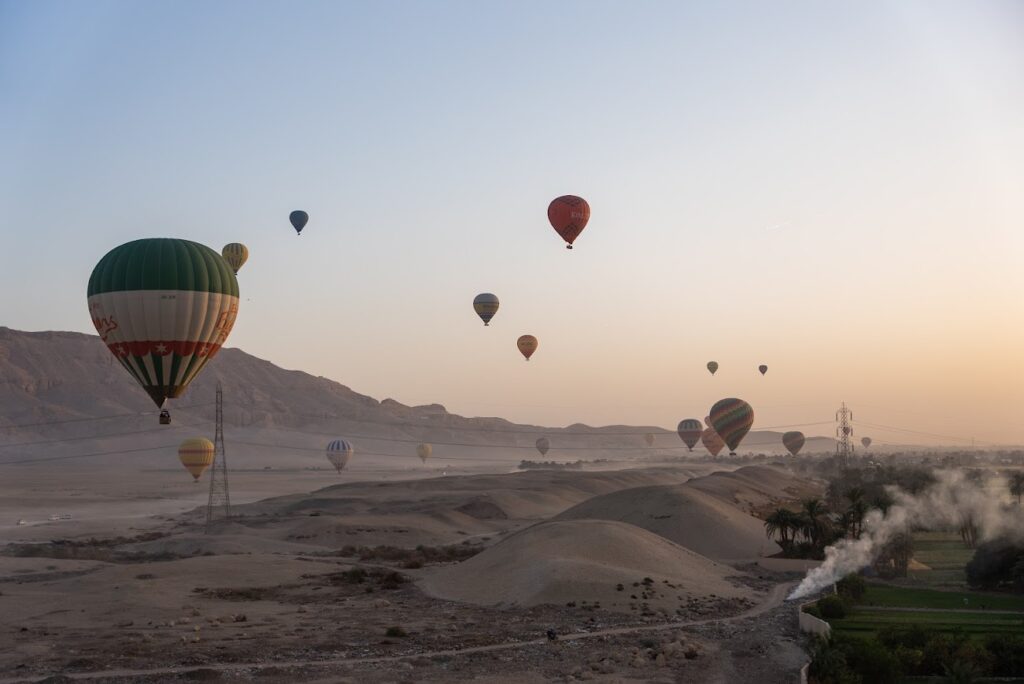
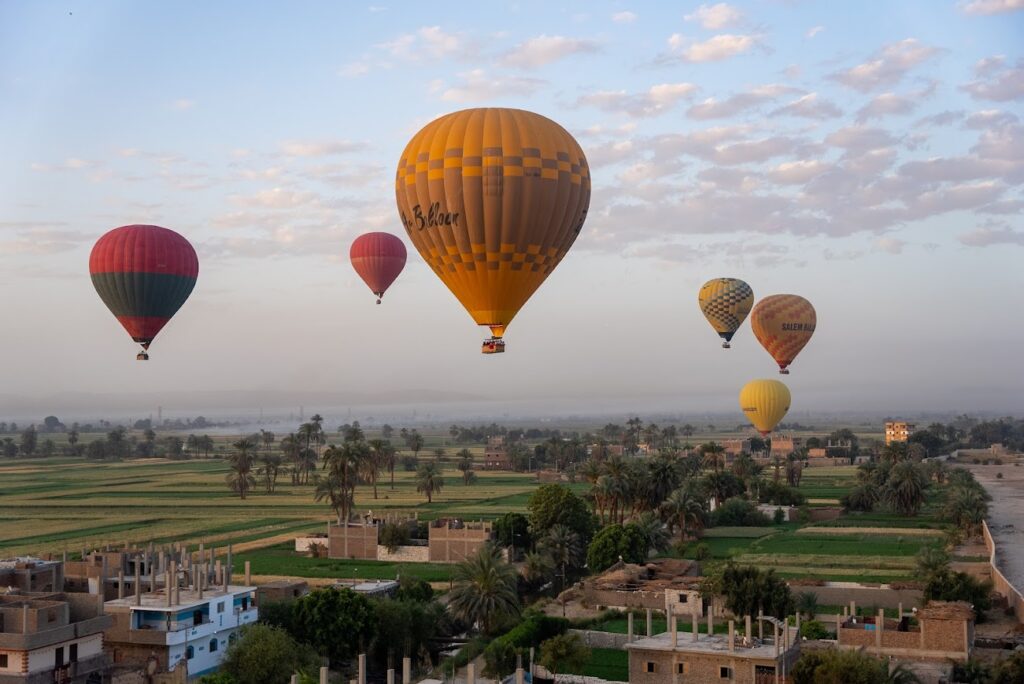
Nobody ever talks about how in that very initial phase where there are gassing up the balloon, there is a very intense heat depending on where in the carrier basket you are located. We had to duck down but fortunately that didn’t last long, and we were soon on our way. It was a very pleasant experience. Gliding across the sky, while seeing the monuments from the Valley of the Kings in the distance, and then watching the beautiful sunrise.
Karnak, Luxor Temple
The first bit of advice I’d give about visiting Luxor/Karnak temple complexes is go early. Next have a hat or some sort of covering for your shoulders. It gets HOT. By the time we left Karnak, we were just about spent.
What makes Luxor Temple extraordinary is its layered history: you’ll find Alexander the Great’s chapel, Roman-era frescoes in the sanctuary, and even an Abu Haggag mosque (built atop the ruins and still used today).
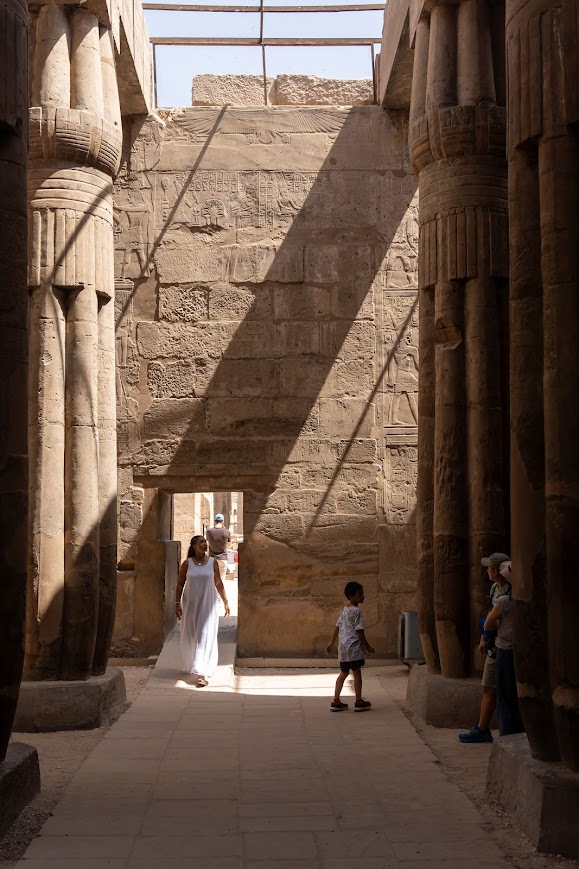
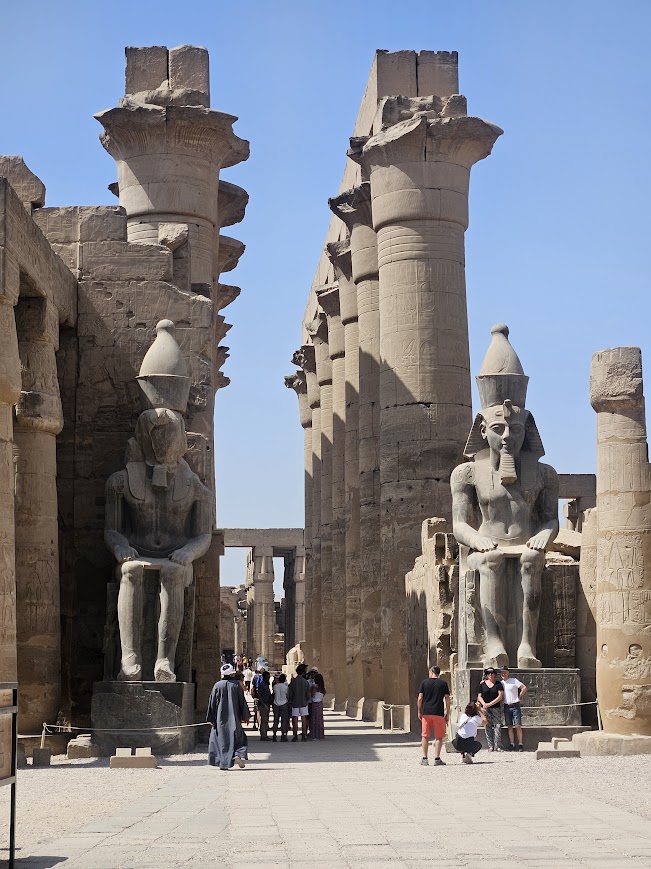
Karnak is the largest temple structure in the world, a sprawling 247-acre wonder. Our Egyptologist, Samuel actually did archaeological work in his youth on the excavation/restoration of Karnak Temple, along with several other famous sites. It’s amazing how a such a massive complex could literally get lost in the sands of time.
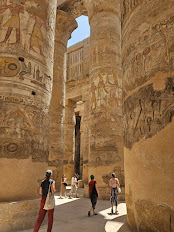
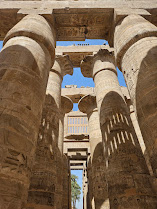
Valley of the Kings/West Bank
The West Bank of Luxor is a necropolis with many tombs and mortuary temples. The afterlife played a central part in the beliefs of Ancient Egyptians. They believed that if buried to the west, they too would be reborn (just as the sun rises in the east, sets in the west, and is “reborn” every day).
Our first stop was the Valley of the Kings where our tickets included tours of three tombs. We also paid for a separate ticket for tours of the tombs of Rameses V and VI, which retains vivid colors in its reliefs. A few of our party also got an extra ticket to see King Tut’s tomb.
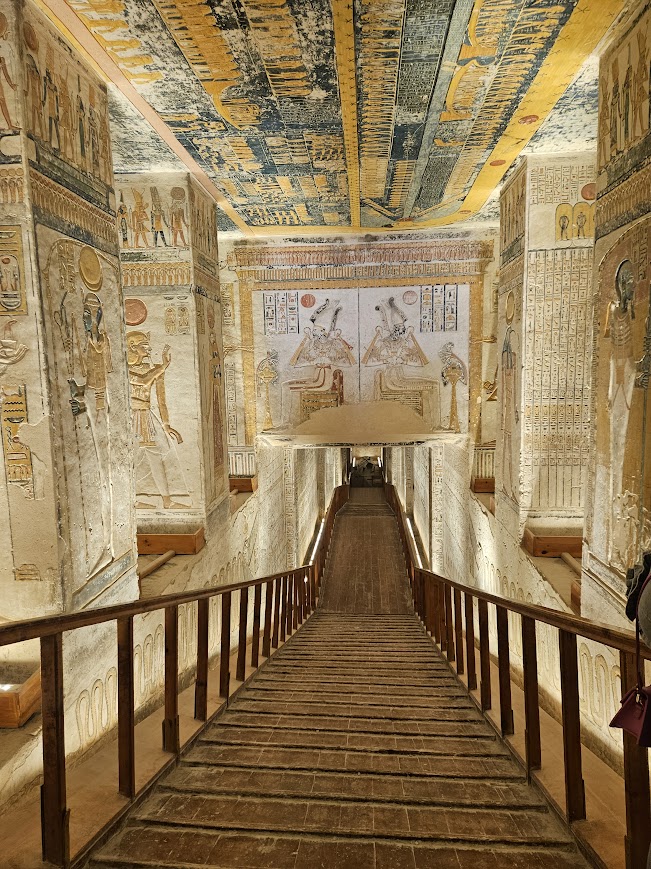
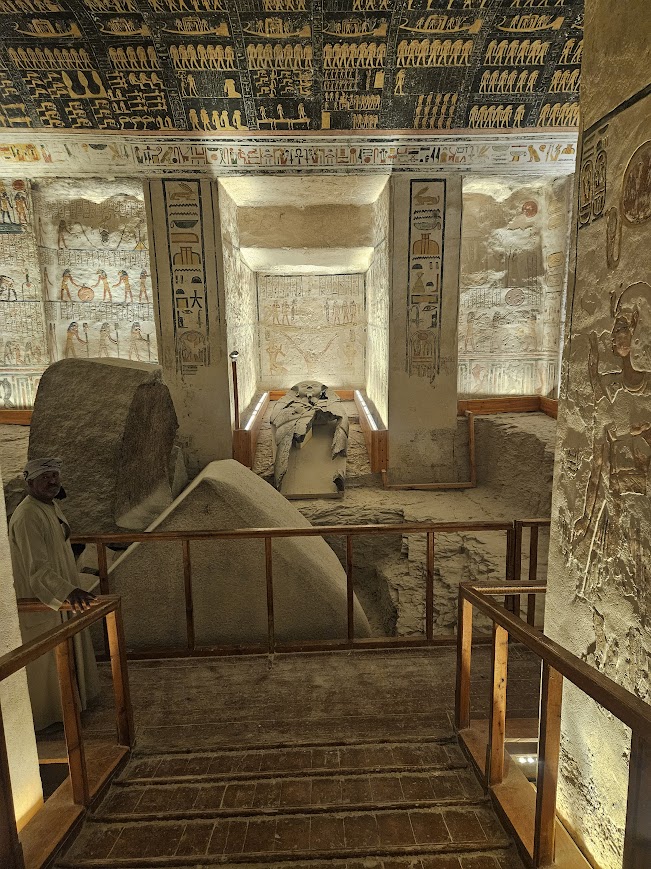
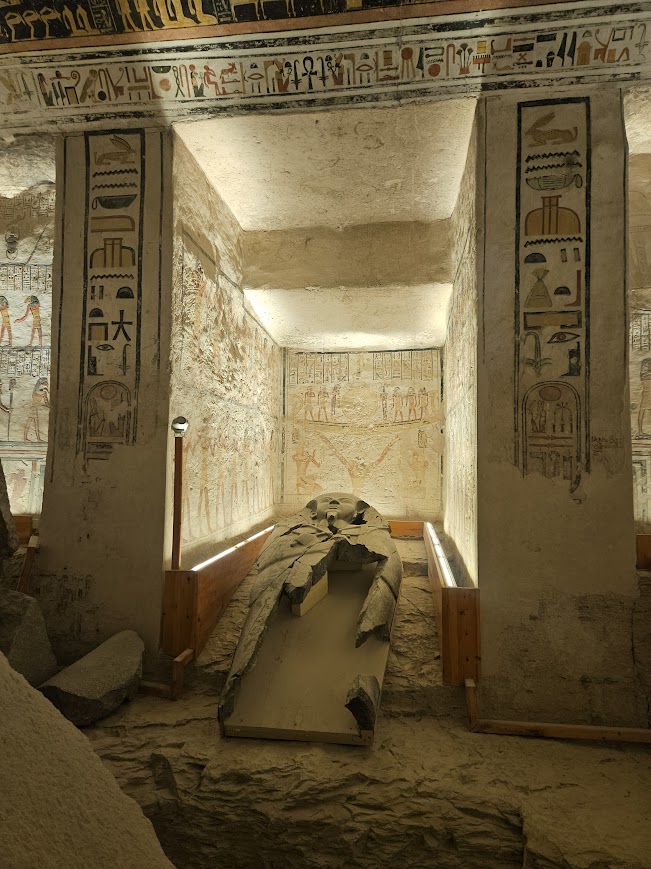
Hatshepsut’s temple
Next we headed over to Hatshepsut’s temple which is the mortuary temple tribute temple (for herself), that she had constructed during her lifetime.
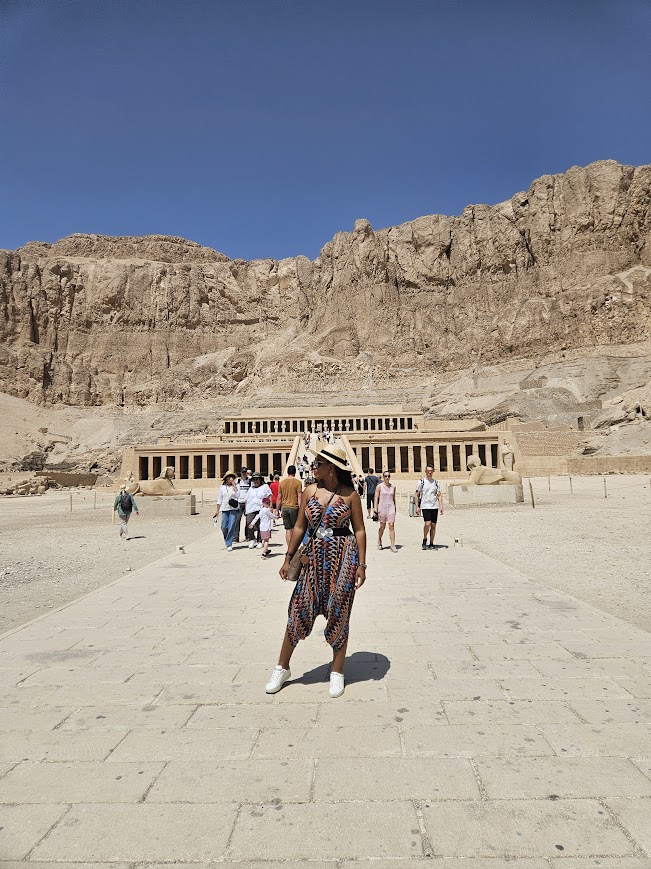
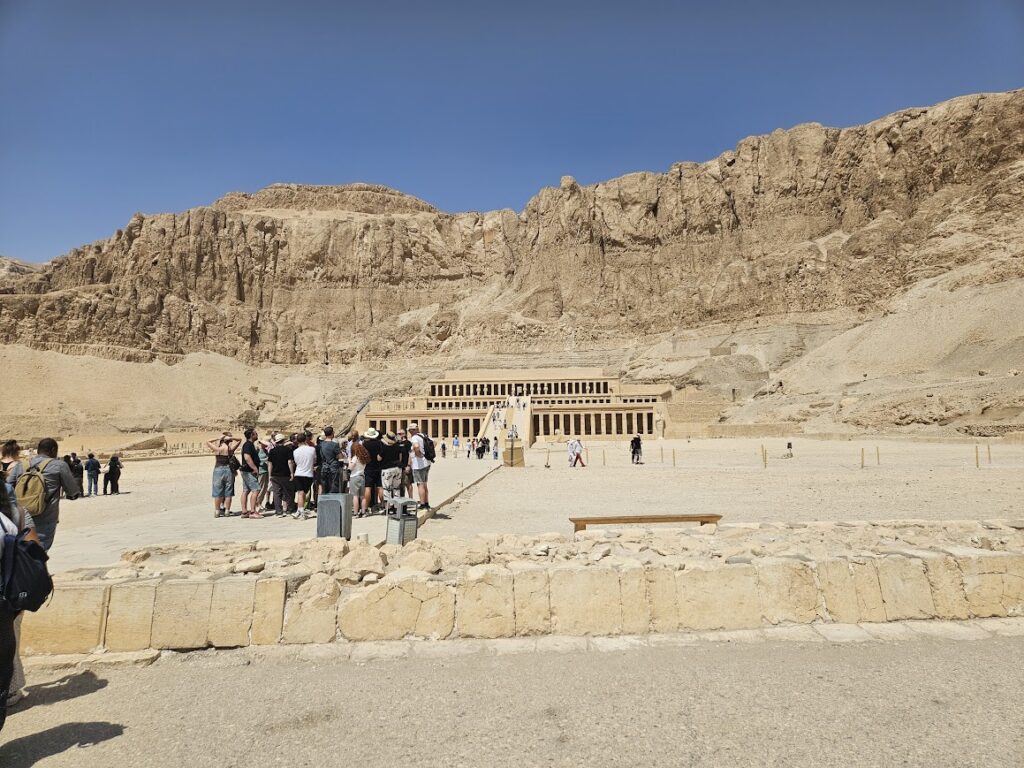
Back to Cairo
For our last night in Cairo we stayed at the Hyatt Regency West, which is a relatively new, and very well appointed hotel. As I mentioned in a previous post, one of the best rated restaurants in Cairo, Barranco, is located on site, and so we had dinner there. We had originally booked in at the Le Meridian airport hotel, which is RIGHT beside the airport- there is literally a covered bridge connecting the hotel and the airport. However the Hyatt Regency was brand new, with better rates and amenties, so we decided to try it out.
Tips
- I definitely see, and would like to reiterate the value in arranging this trip with a guided service. Most of our logistics (travel to and from sites, tickets etc) were pre-arranged and seamless. Touring the sites with professionals with in-depth knowledge really enhanced the experience. Egypt is one of those destinations that is particularly unique in that way. If you’re looking for a recommendation, here’s the link to our guide .
- Join all the hotel rewards programs- you never know when you’ll get a perk- for instance our room upgrade in Luxor.
- Wear layers for the balloon ride. It’s chilly at first, but will warm up a little by the time you land and get back across the river.
Thank you for following along on this journey with me. Stay tuned for the next adventure!
